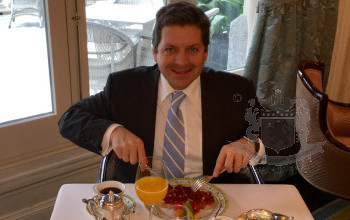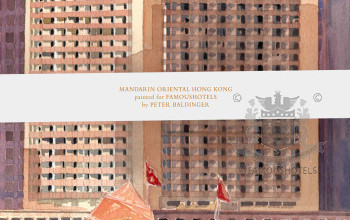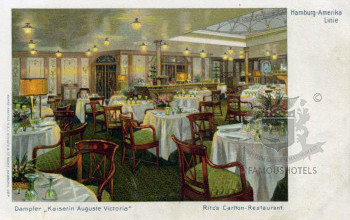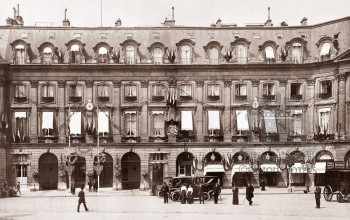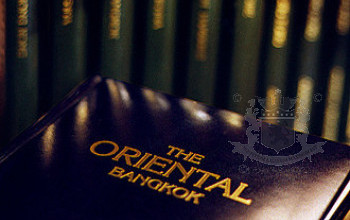Ritz Madrid - The Birth of a Hotel
( words)
Birth of A Modern City
(Excerpts of chapter 2. of the book HOTEL RITZ MADRID)
While César Ritz was busy constructing his hospitality empire, Spain’s own empire was in the process of disintegrating. In 1898 the country went to war with the United States over tensions stemming from its handling of the Cuban struggle for independence. Just 109 days after the Spanish-American War broke out, the Treaty of Paris granted ownership of Spain’s colonies in Puerto Rico, the Philippines and Guam to the United States. The Americans also occupied Cuba until 1902. The conflict had been so catastrophic that it became known simply as ‘El Desastre’.
... These were difficult years for Spain, at the time ruled by a queen regent, Maria Christina of Austria, who was keeping the throne warm until her eldest son Alfonso reached the age of 16. ...
... It was thus a rather unstable Spain that Alfonso XIII inherited when he was finally old enough to assume power in 1902. But the new king had big plans for his capital city Madrid. After acceding to the throne, he travelled around Europe and was impressed by what he saw in the continent’s great cities. Upon his return to Madrid, he was determined to transform the Spanish capital into a modern European metropolis. Plans for a grand thoroughfare through the heart of the city had been talked about since the mid-nineteenth century but never quite materialised. La prensa madrileña, the press of Madrid poked fun at the project by dubbing it the ‘Gran Vía’ (‘Great Road’). In 1904, the plans were finally approved. Within the next couple of years, buildings were demolished to make way for the boulevard and gas and electricity were put in. In fact, at first the Gran Vía was not one but three adjoining boulevards, named Eduardo Dato, after the Mayor, Pi y Margall, in honour of the first president of the First Republic, and Conde de Peñalver, another mayor of the early twentieth century. The new road would give architects the opportunity to create grand new buildings along it, the most famous of which is the so-called Edificio Metrópolis, starting from today’s Calle de Alcalá, designed by Jules & Raymond Février in 1907.
...
... In January 1906 Alfonso proposed to Victoria Eugenie and the wedding date was set for May. When the time came, a flurry of royals descended on Madrid. The ceremony itself passed without problems but afterwards, as the royal procession was heading back to the Palacio Real, drama struck. An anarchist militant, a certain Mateu Morral, hurled a bomb towards the newlyweds from a nearby balcony. If Ena, as the new queen became known, hadn’t turned her head at the last moment to catch a glimpse of the Santa María Church, she would have been blown to kingdom come. Fortunately, a few specks of blood on her pristine wedding dress were the only damage done.
Aside from the failed assassination attempt, the royal wedding presented King Alfonso with another dilemma. There was a glaring lack of prestigious accommodation in Madrid.
Paris, and now London, had a Ritz, while Berlin, Rome, Vienna and others had the sort of exquisite hotels fit to host kings and queens and princes and princesses. But Madrid? Nothing of the sort. Alfonso had to put up his royal guests in palaces offered by the nobility.
Moreover, this was a time when wealthy travellers from Northern Europe and America were flocking to the warmer climes and bluer skies of southern Europe. With its Prado Museum, its Asturias quarter, its medieval and baroque landmarks and the close proximity of attractions such as the Escorial, Madrid was becoming an attractive destination for the rich new tourists. But there wasn’t a hotel in the city up to their discerning standards.
In truth, it was rather embarrassing when one considered the sort of luxury and service these people were used to in their home cities. Something had to be done.
© ANDREAS AUGUSTIN, 2017
The book can be bought at the hotel or ordered on-line in our BOOKSHOP.



